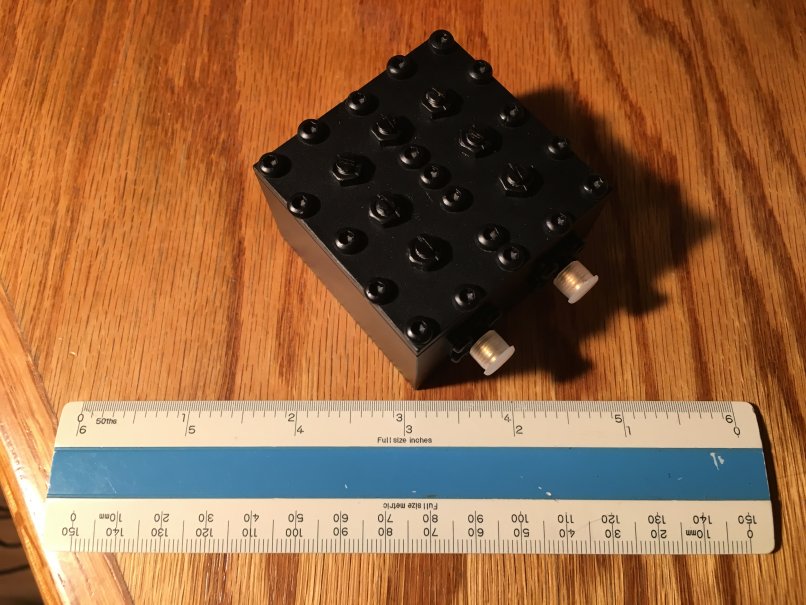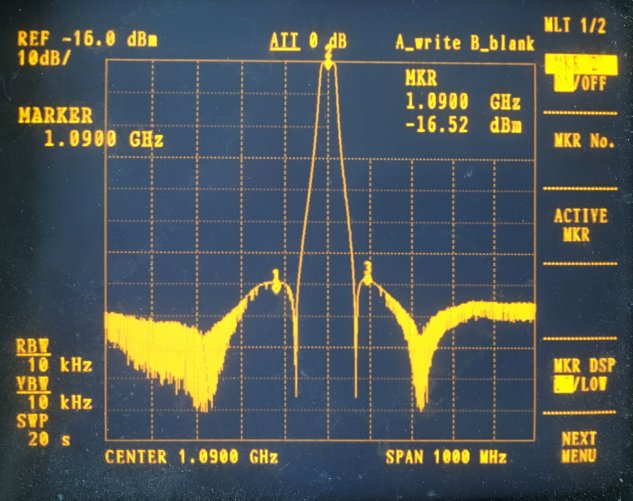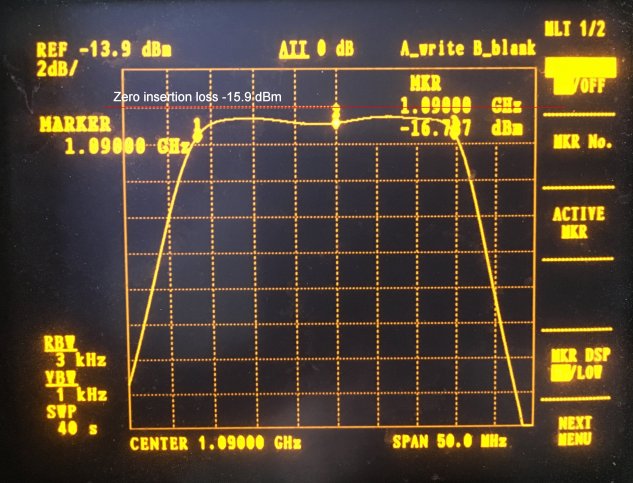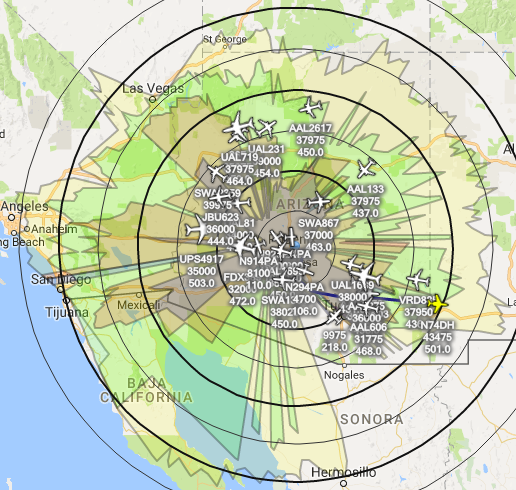Over a year ago I decided that I needed some good filters for ADS-B reception on mountaintops. Not that I had an immediate need, I didn’t have anything on a mountaintop, but I suppose I had a little extra cash and felt excited to be able to imagine a good ADS-B receive site atop an Arizona mountaintop (or hilltop) location. So, I drafted up what I thought would be a reasonable spec and went into Alibaba to find a filter manufacturer to build one. I ended up with 5 filters, all exactly to my spec, and for a bargain price (well, relatively speaking).
Above is the finished ADS-B receiver assembly, complete with Raspberry Pi, RTL-SDR 1ppm TCXO SDR dongle, a eBay-purchased LNA, an eBay-purchased 12 vdc to 5 vdc DC-DC converter, and some coaxial cabling (also from eBay). The black square in the center of the image is the 1090 MHz filter, and it’s a quite good one.
It’s a straightforward cavity filter, a little aluminum brick with fine performance.
Solid out of band rejection, and I suspect around -100 dB ultimate rejection. The SA just doesn’t have the range to see it.
While the signal of interest is only a MHz wide, I wanted a filter that was wider so that temperature and mechanical variation would never haunt me, and I wanted a low bandpass loss (the above shows less than 1 dB loss) across the band.
Behind the filter is a run-of-the-mill eBay wideband LNA with a 1 dB NF, and somewhere around +30 dBm IP3. The RPi is running the most current version of FlightAware’s PiAware, rev 3.0.4, and supports just about any off-the-shelf USB SDR dongle.
After setting it up, it looked like I needed to reduce the overall gain a bit, so I discovered how to go into dump1090 and change the gain from “automatic” (really not, I think it’s just max) to 42 dB. That gave me best range and most received a/c.
The antenna for the site is a FlightAware fiberglass stick, about 12′ above the ground, mounted on the side of the tower.
 Coverage seems to be pretty close to the model generated by HeyWhatsThat.com (above). The blue line is the 40,000′ contour, while the orange line is the FL300 contour.
Coverage seems to be pretty close to the model generated by HeyWhatsThat.com (above). The blue line is the 40,000′ contour, while the orange line is the FL300 contour.
24 hours or so of actual flight logs produces the following plot, which is more or less pretty similar to the HeyWhatsThat plot.
The primary notch in the pattern, in the SE, is the higher part of the ridge on which the radio site sits. It ends up blocking any coverage of flights in and out of Tucson, over 110 miles away, until said flights get to FL300 or so.
It will be interesting to see how the coverage shapes out over the next few weeks – I hope that it will get up near the top of all the local receive sites in performance.





